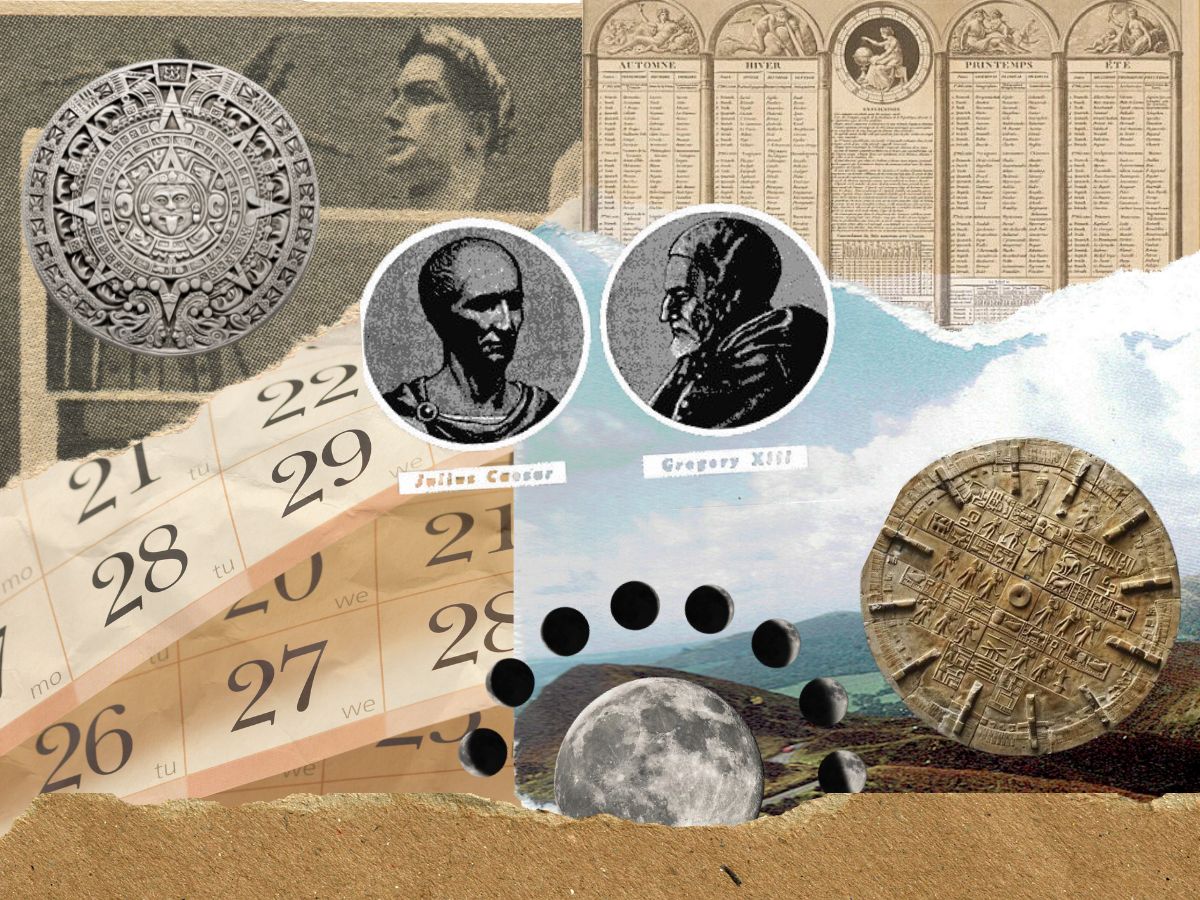For students, calendars are essential as they track dates for tests, homework due dates, club meetings, and hangouts with friends. Calendars also serve as a record of culture, religion, and economics.
The first calendar was created by the Sumerians circa 4000 BC. The Sumerians created a calendar primarily for agriculture, religious observances, and societal organization. It helped them predict seasonal changes, which they used to decide when to plant crops for good harvests. It was important for scheduling events, trade, and political activities. This consistent system helped people manage their daily and yearly schedules.
There are three base types of calendars: lunar, solar, and luni-solar. Most cultures have used one or more of these calendars to manage agricultural seasons and celebrate cultural holidays.
Today, many countries use the solar calendar, which was designed to track equinoxes and solstices. Since it accurately tracks seasons, which is important for agriculture, the Solar calendar was used by a plethora of cultures: the Gregorian, Julian, Persian (Iranian), Hindu, Coptic, Mayan, and Ethiopian. It measures one revolution around the sun using 12 months. Each month varies from 28 to 31 days. One revolution is 365.2425 days, and to account for the extra .25 days, most calendars add an extra day every four years, calling those years leap years. However, this small discrepancy causes the calendar to drift by about 1 day every 128 years.
The Lunar calendar tracks the time it takes for the moon to complete one full lunar cycle including all of its moon phases. Each lunar month alternates between 29 and 30 days. It has 12 months, but some cultures add a leap month every few years to prevent it from drifting too far from the timings of the seasons which were especially important for agriculture. The Sumerian, Mayan, Islamic, and Hebrew calendars are all based on the Lunar system.
The Luni-Solar calendar incorporates elements from the lunar and solar cycles. It’s 365.25 days, and each month is 29 or 30 days long. It adds leap month to the regular 12 months every 2-3 years to make up for the 11-day discrepancy between the lunar and solar calendars. The Chinese, Jewish, Hindu, Buddhist, and Japanese cultures used the luni-solar calendar.
The Julian calendar, which was introduced by Julius Caesar, was the predominant calendar system in Europe for over 1600 years. It was supposed to be more accurate than the previous lunar-based calendar, which had become misaligned with the solar year. The Julian calendar had 365.25 days divided into 12 months, and a leap year adding an extra day every 4 years to the end of February. Most months had either 30 or 31 days while February had 28 days except for 29 on leap years. The names for the months were largely inherited from the Roman calendar: January (named after the Roman god Janus), August (named after Julias Caesar’s nephew Emperor Augustus), and others. The Julian calendar was still slightly inaccurate, causing it to drift by 10 days by the 16th century.
In 1582, Pope Gregory XIII introduced the Gregorian calendar, which made the calendar more accurate by refining the leap year rule. The Gregorian calendar skipped any leap years happening at the tail-end of centuries: unless the centuries were divisible by 400. This system resulted in a calendar year that is 365.2425 days long. The Gregorian calendar became the predominant calendar in Europe, but the Julian calendar is still used in some Orthodox Christian churches.
Today, religious calendars are used all over the world by different cultures, and their main purpose is to help followers mark sacred times and maintain rituals that are central to their spiritual life. The importance of religious calendars lies in their ability to guide individuals and communities in staying connected to their beliefs and traditions, while also fostering a sense of unity and devotion. Many follow that pattern because ceremonies and holidays historically were meant to worship the harvesting period, like Chuseok, a major Korean holiday. They serve to mark the worship of gods, and special days in adherence to the symbol that marks them like Ramadan, an Islamic holiday that begins on the sighting of the crescent moon after the month of Sha’ban.
The Holocene Epoch, which began approximately 10,000 years ago, aims to place human history in a broader geological context, emphasizing the long span of human civilization relative to Earth’s history. The Holocene Epoch calendar started around 10,000 years ago, which marks the end of the Ice Age and the rise of human civilization. It uses the same structure as the Gregorian calendar but with a different year system. In this calendar, the year 2025 CE is 12,025 HE (Holocene Era). The Holocene calendar puts human history in a bigger geological context, highlighting our civilization’s long impact on Earth. It’s useful for fields like archaeology and environmental science because it aligns human history with major geological events.
By defining specific periods and milestones, calendars allow us to chronicle significant events such as the rise of civilizations, the development of writing, and the emergence of major religions. They also help us frame the long history of Earth, providing a context for understanding the distant past. As civilization emerged, early cultures developed their calendar systems to track seasons, agricultural cycles, and religious observances. Through these systems, we can trace the development of human societies and their milestones, such as the rise of Mesopotamia, the founding of ancient Egypt, and the birth of democracy in ancient Greece. Calendars, therefore, are not just tools for everyday life; they are vital instruments for understanding and recording the vast sweep of time.






